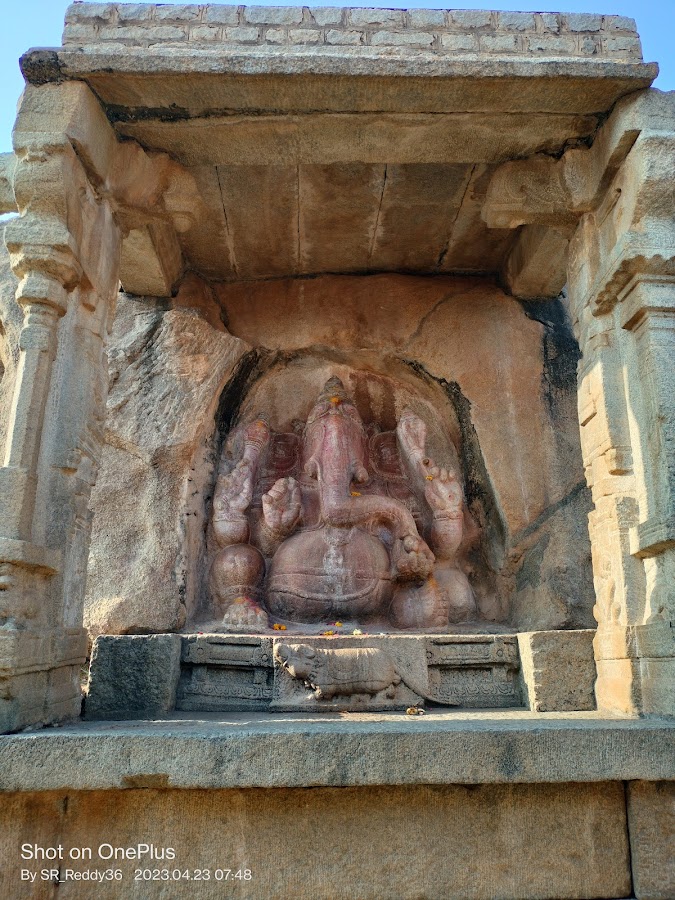
Ganesha Statue
Lepakshi, India
- Admire the monolithic Ganesha statue
- Explore the Veerabhadra temple complex
- Learn about Vijayanagara art
- Take photos of the intricate carvings
Known for:
Description:
The Ganesha statue at Lepakshi is a monolithic marvel carved from a single granite boulder. It is a significant example of Vijayanagara-era sculpture. The statue is located within the Veerabhadra temple complex and is known for its impressive size, intricate detailing, and serene expression. Devotees and tourists alike are drawn to its artistic beauty and spiritual significance. The statue portrays Ganesha in a seated posture with his characteristic elephant head, large belly, and multiple arms holding various symbolic objects. It is a must-see for anyone visiting Lepakshi.
History:
The Ganesha statue, like the rest of the Veerabhadra temple, dates back to the 16th century, during the Vijayanagara Empire's rule. The temple and its sculptures, including the Ganesha statue, were commissioned by Virupanna Nayaka, a governor under the empire. The monolithic nature of the statue speaks to the advanced sculpting techniques of the period. It's believed that the artisans carved the statue in situ, directly from the existing rock. The statue has withstood the test of time, providing a glimpse into the artistic and religious practices of the Vijayanagara era, attracting historians and art enthusiasts.